Georgia O’Keeffe Country
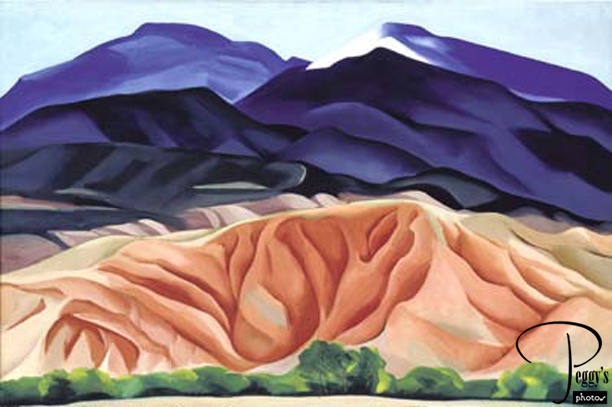
I drove back to Santa Fe for the third day in a row to take an escorted tour called “O’Keeffe Country: Abiquiu and Ghost Ranch,” offered by Great Southwest Adventures. A van was used for the tour for our small group: two couples, one from Connecticut and one from Washington, DC; a group of four women from Louisiana on a road trip; and me. Linda had errands to do, so I got out of her hair for the day. Our tour guide/driver was Bruce. Photo: One of the paintings of Georgia O’Keeffe of the area we were to visit.

Georgia O’Keeffe Country
On the Road
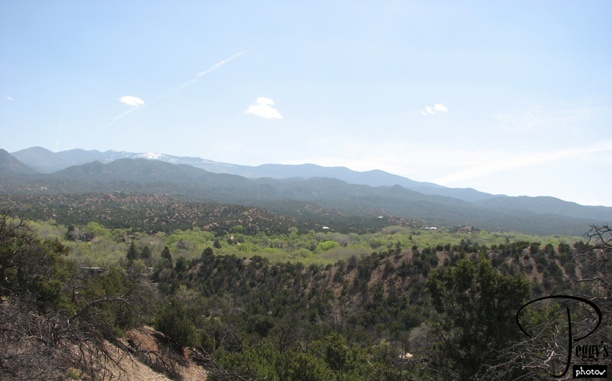
We took the 502 out of Santa Fe to the 84. The scenery was spectacular for most of our journey.

On the Road
On the Road
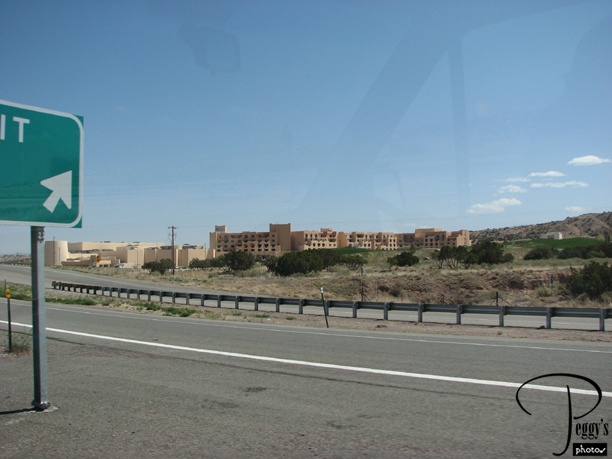
We passed through the Pueblo of Pojoaque. That is a new Hilton in the photo––a joint venture of Hilton and the Pojaque, about 15 miles north of Santa Fe. Bruce told us that this pueblo only has about 300 members, but from its casino, it is doing quite well, witnessed by the number of new buildings on its reservation.

On the Road
On the Road
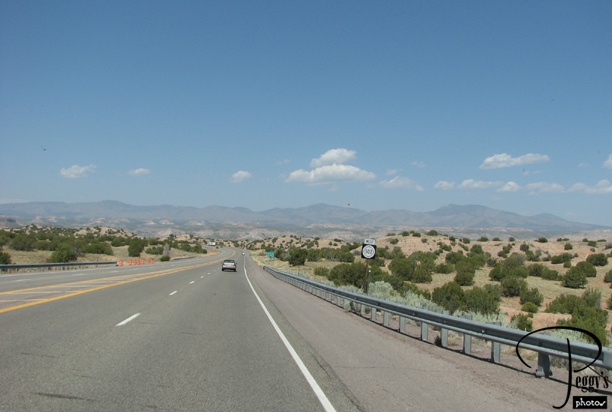
We are on the 84 now.

On the Road
On the Road
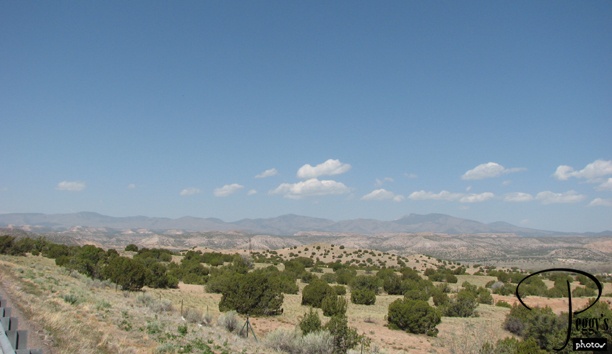
Farther along.

On the Road
On the Road
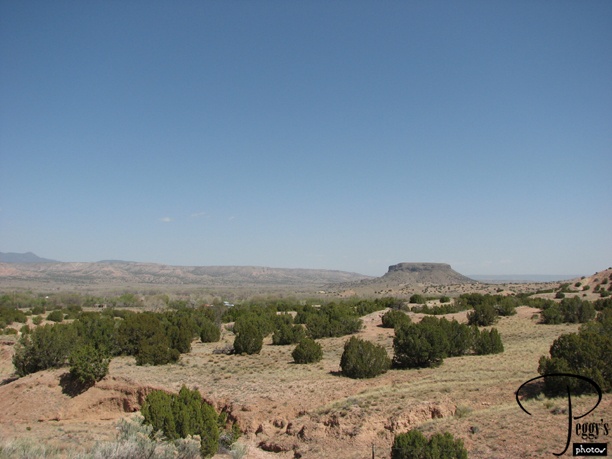
The Black Mesa can be seen in this photo. It is a volcano with its crown eroded off.

On the Road
On the Road

Farther along. The scenery kept changing.

On the Road
On the Road
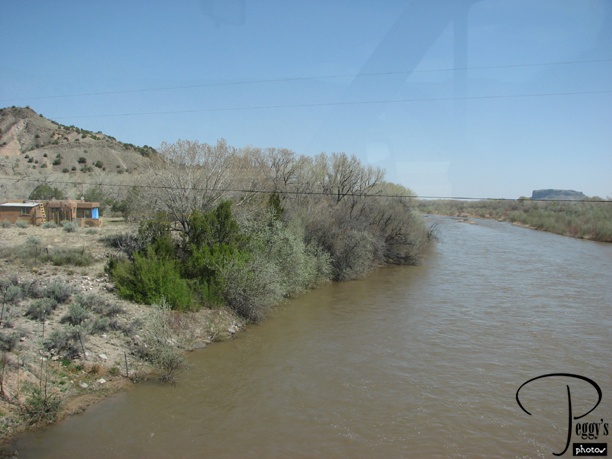
Crossing the Rio Grande. Note the house on the left of the photo.

On the Road
On the Road
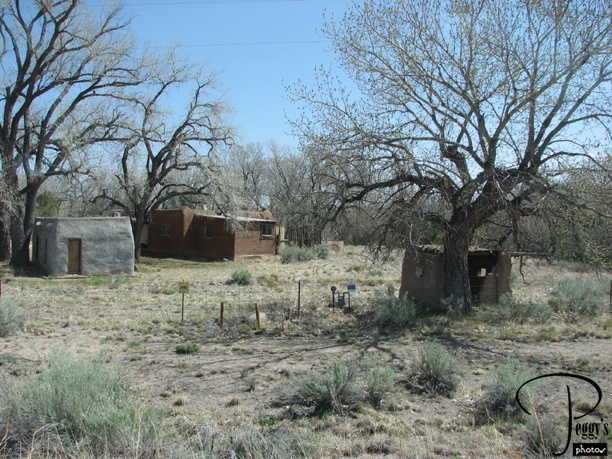
The rest of this property. We are near the turnoff for Los Alamos, where the atomic bomb was developed. Bruce told us that a woman from the East Coast leased this property from the Pueblo Indians––she wanted to be away from people and activity. However, this didn’t last long when the scientists starting coming to Los Alamos. She opened a tea shop in one of these buildings, which became frequently visited by the Los Alamos scientists. I wrote down her name as Edith Warren but I don’t know if it is spelled correctly. Bruce said that she wrote a book about her adventures here.

On the Road
On the Road
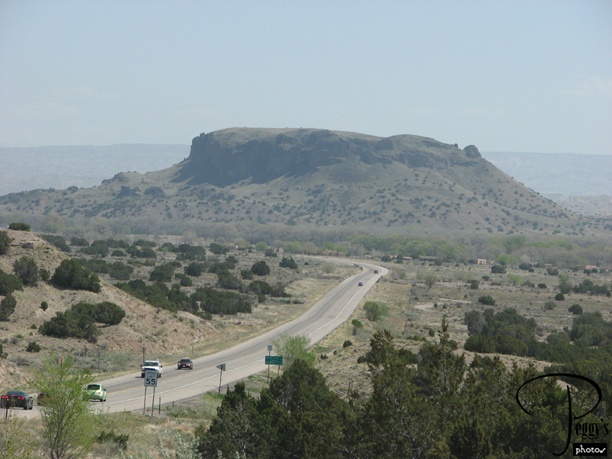
Closer to the Black Mesa.

On the Road
Santa Clara Indian Pueblo
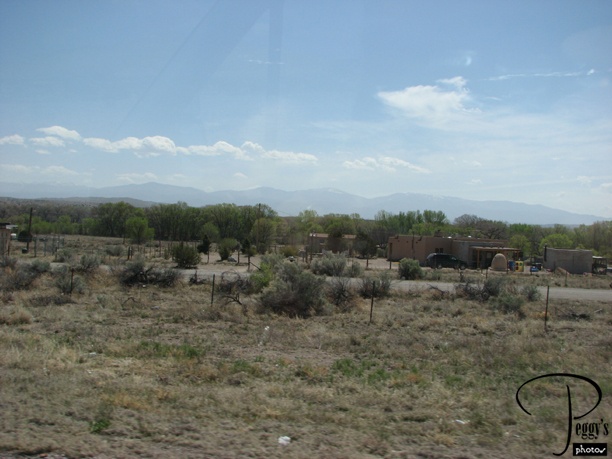
We next drove around the Santa Clara Indian Pueblo, established about 1550.

Santa Clara Indian Pueblo
Santa Clara Indian Pueblo
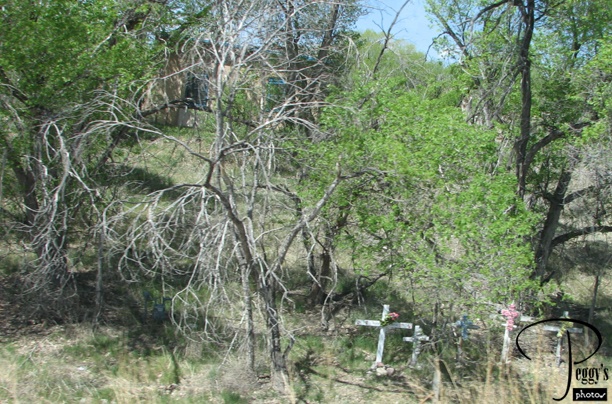
Crosses are placed at the side of the road when someone dies. They do not indicate burial plots.

Santa Clara Indian Pueblo
Santa Clara Indian Pueblo
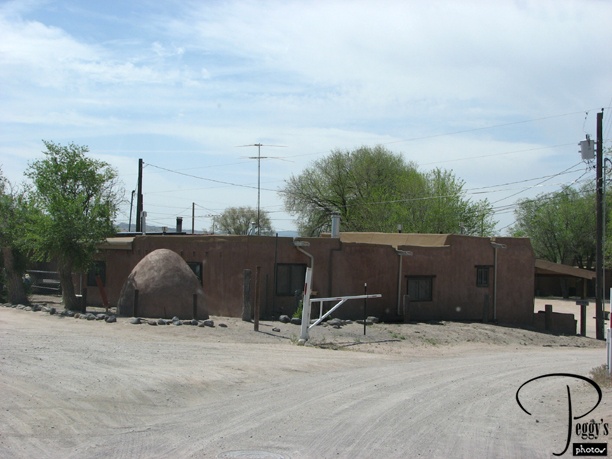
In the pueblo. A pueblo house with a horno (outside oven).

Santa Clara Indian Pueblo
Santa Clara Indian Pueblo
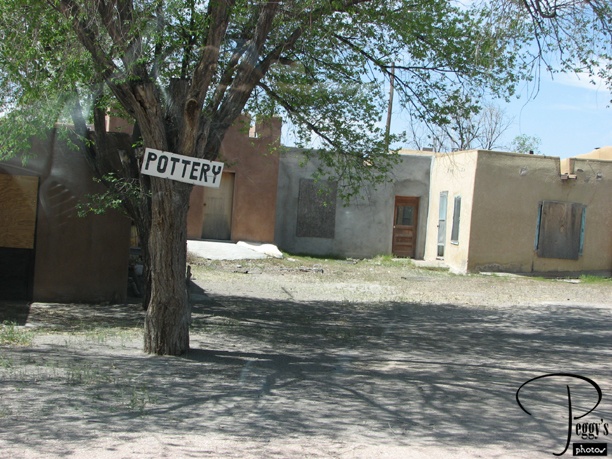
Pottery for sale. We didn’t get out of the van here. The Santa Clara Pueblo is well known for its pottery.

Santa Clara Indian Pueblo
Santa Clara Indian Pueblo
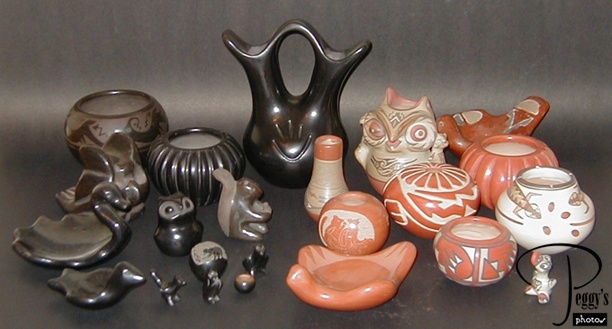
Some of its pottery.

Santa Clara Indian Pueblo
Santa Clara Indian Pueblo

Part of a ceremonial complex. Very few people live in the old pueblos today––most live outside the main pueblo (in better equipped houses), with the pueblos serving mainly as ceremonial centers.

Santa Clara Indian Pueblo
Santa Clara Indian Pueblo
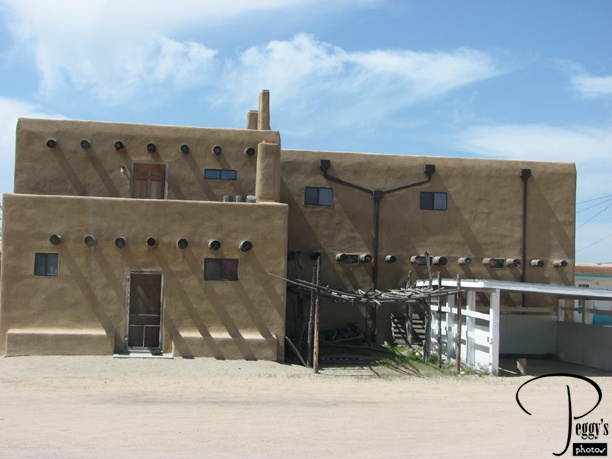
More of the ceremonial complex. The tribal ceremonial leaders use the shelter of the white enclosure during breaks in the ceremonies.

Santa Clara Indian Pueblo
Santa Clara Indian Pueblo
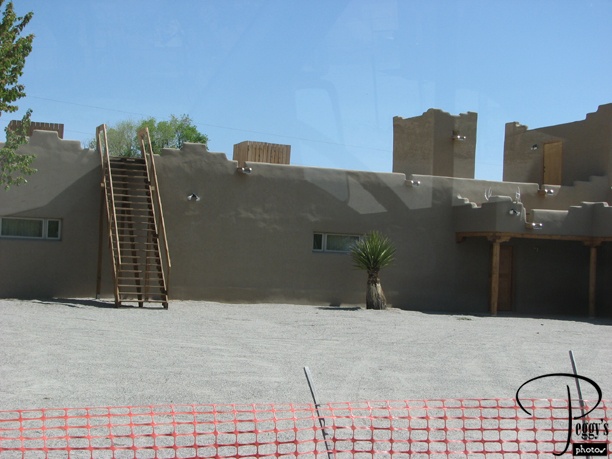
A new kiva. I have always thought of a kiva (a ceremonial chamber) as being below ground and with a circular shape. This is a modern kiva with a rectangular shape and above ground.

Santa Clara Indian Pueblo
Santa Clara Indian Pueblo
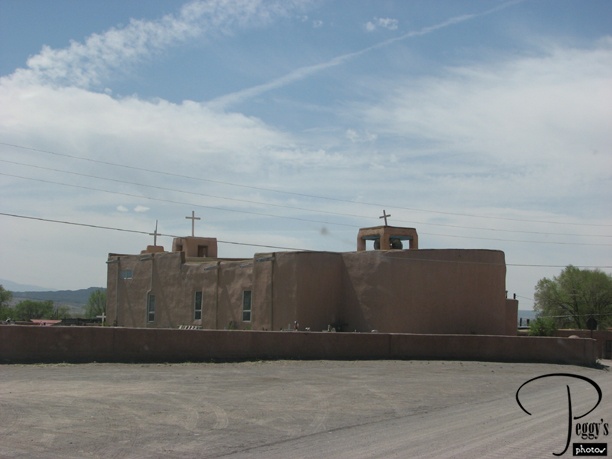
The Mission Church from the back.

Santa Clara Indian Pueblo
Santa Clara Indian Pueblo
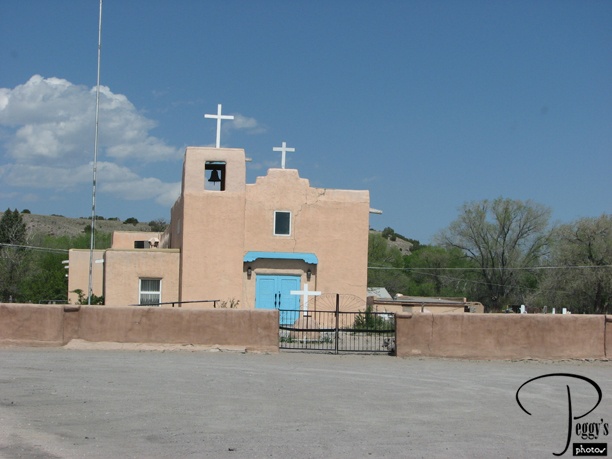
And from the front.

Santa Clara Indian Pueblo
Santa Clara Indian Pueblo
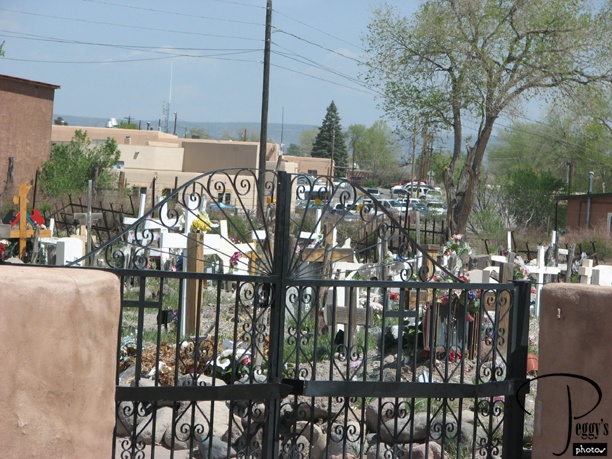
The cemetery on the side of the church.

Santa Clara Indian Pueblo
Santa Clara Indian Pueblo
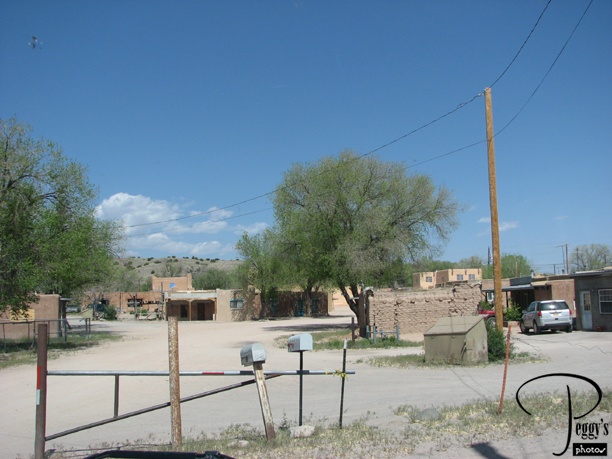
More of the pueblo. Even though many members of the pueblo tribes are quite well–to–do (from their pottery, casinos, etc.), it is against their culture to show individual wealth. Hence, you see simple houses on the reservations and wealth shown instead in their public buildings.

Santa Clara Indian Pueblo
Back on the Road
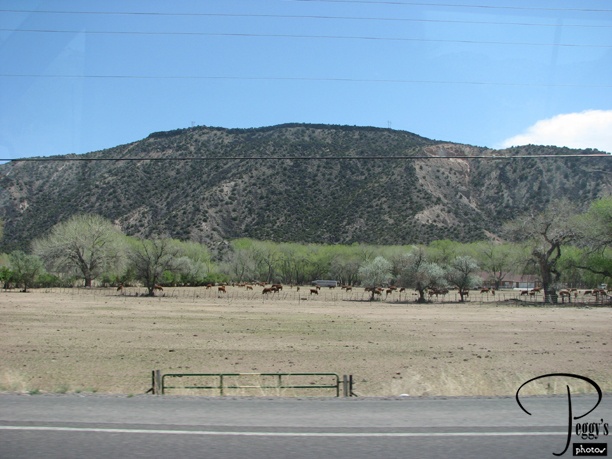
A horse ranch.

Back on the Road
Back on the Road
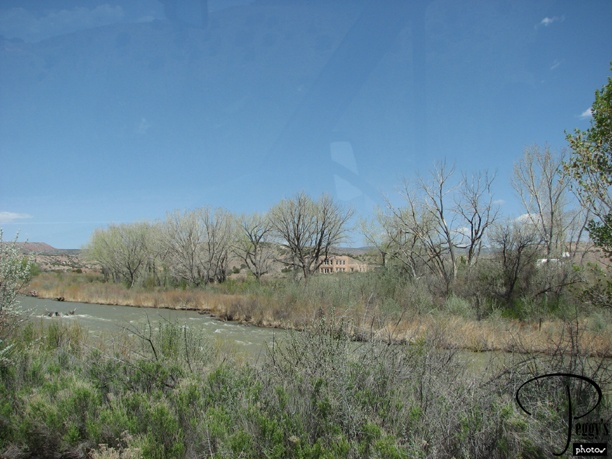
A river.

Back on the Road
Back on the Road
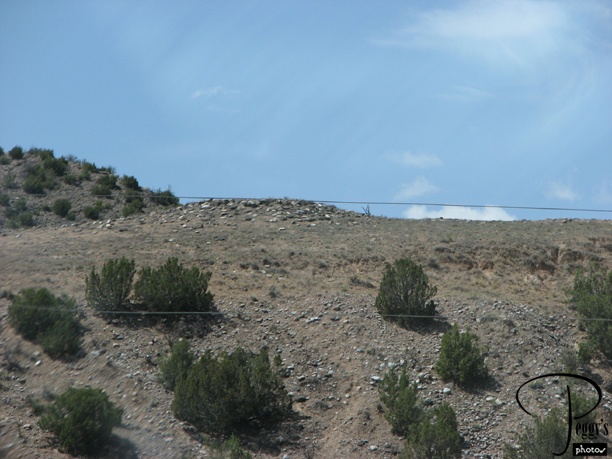
That pile of rocks in the middle of the photo actually is part of an ancient pueblo.

Back on the Road
La Santa Rosa de Lima Church
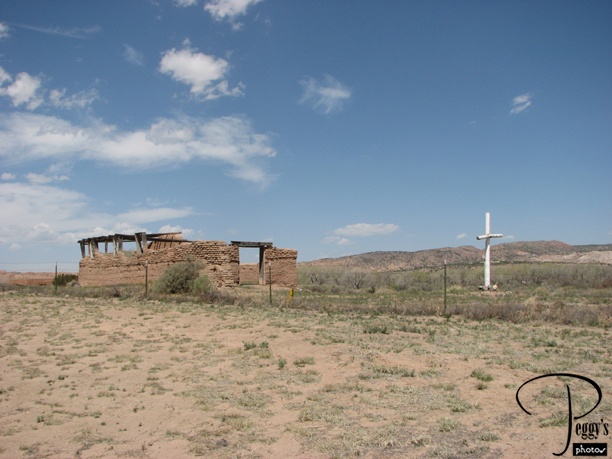
The ruins of La Santa Rosa de Lima Church, built in 1890.

La Santa Rosa de Lima Church
La Santa Rosa de Lima Church
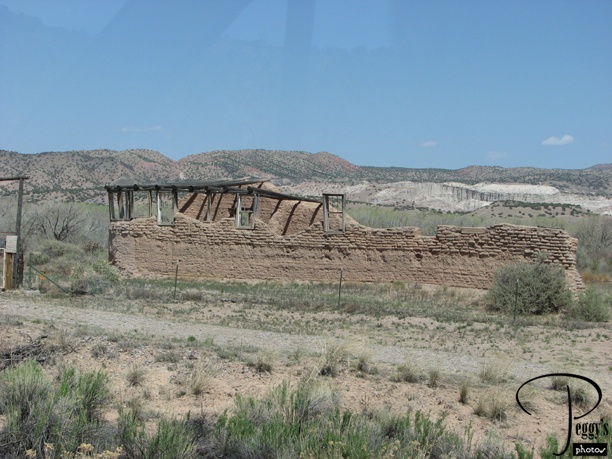
Closer–up photo of the ruins. Above the church, in the hills, you can barely make out a building.

La Santa Rosa de Lima Church
Seen from La Santa Rosa de Lima Church
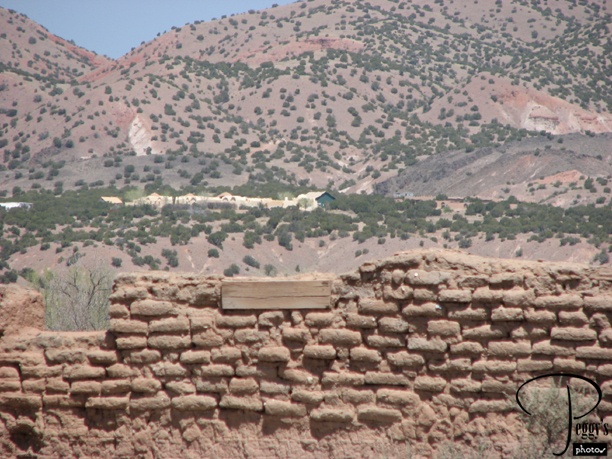
Closer–up view of the building––it is a mosque.

Seen from La Santa Rosa de Lima Church
Seen from La Santa Rosa de Lima Church
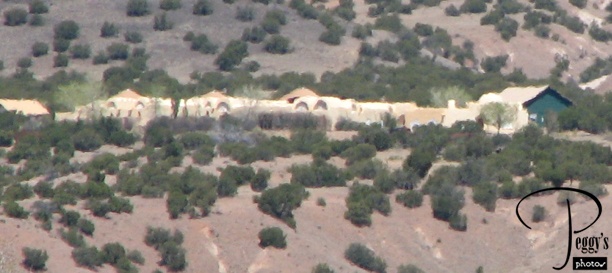
A closer look.

Seen from La Santa Rosa de Lima Church
La Santa Rosa de Lima Church
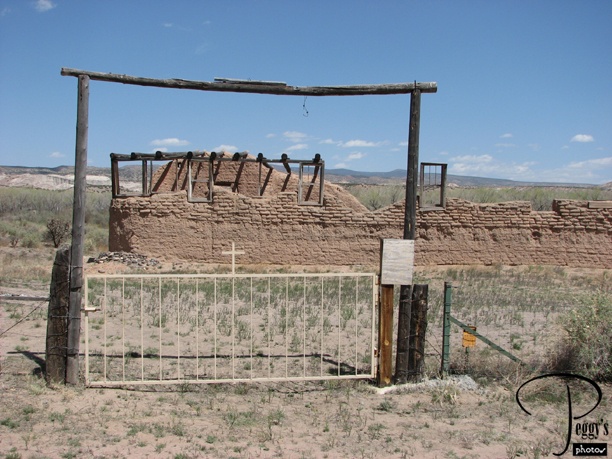
Gate denying us entrance to the church grounds.

La Santa Rosa de Lima Church
La Santa Rosa de Lima Church
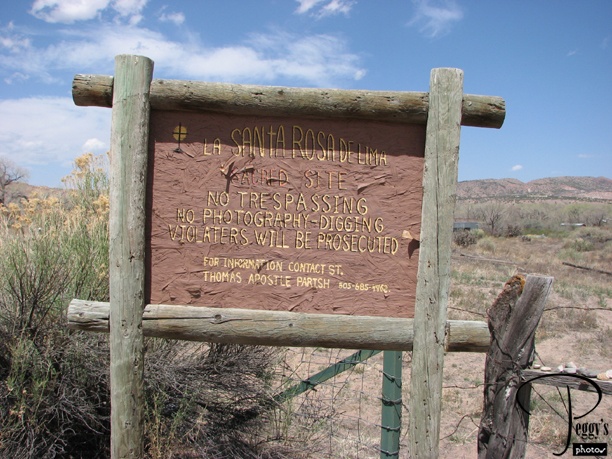
And after all of us have taken many photos we saw this sign. Bruce said just to ignore it, but we were never in the actual church grounds.

La Santa Rosa de Lima Church
Seen from La Santa Rosa de Lima Church
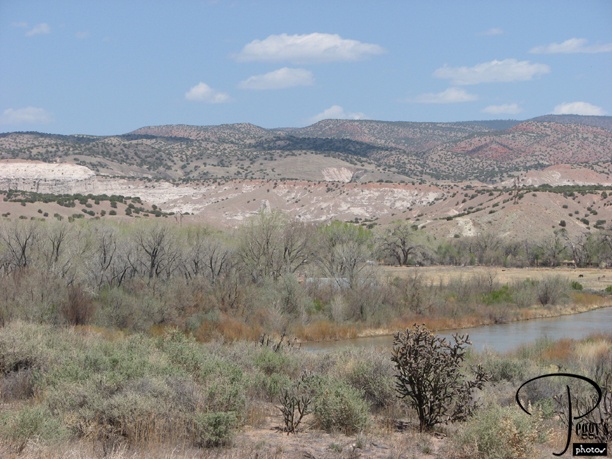
The land near the church.

Seen from La Santa Rosa de Lima Church
Seen from La Santa Rosa de Lima Church
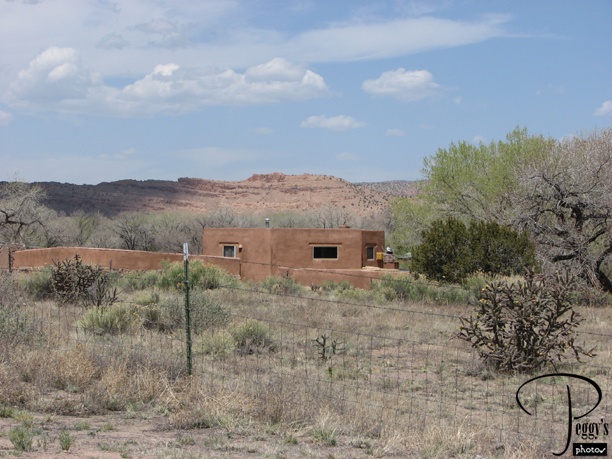
A house with no neighbors in sight.

Seen from La Santa Rosa de Lima Church
Cafe Abiquiu
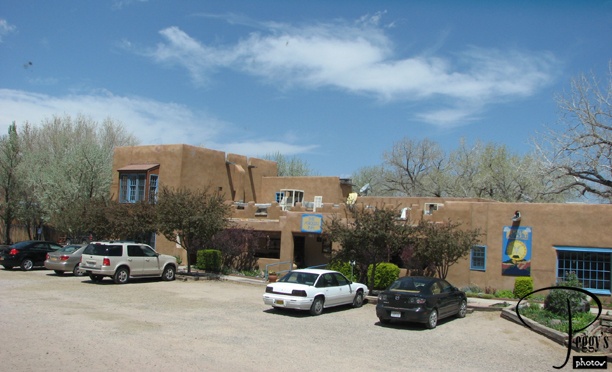
We took a break at this cafe. There is also a hotel here. Bruce said that this complex was built by people from the mosque.

Cafe Abiquiu
Cafe Abiquiu
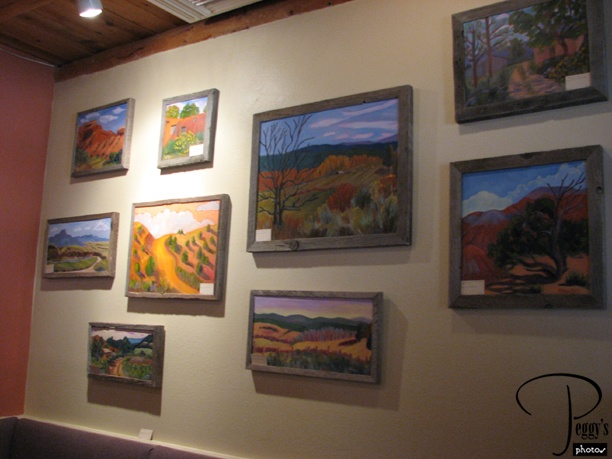
Paintings of Southwestern scenes on the wall of the Cafe Abiquiu.

Cafe Abiquiu
Cafe Abiquiu
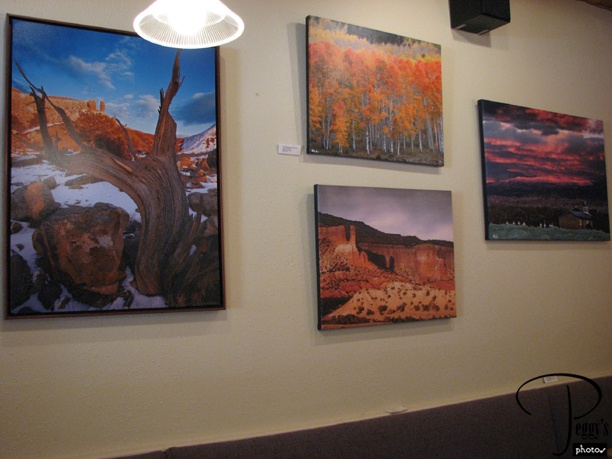
More paintings.

Cafe Abiquiu
Cafe Abiquiu
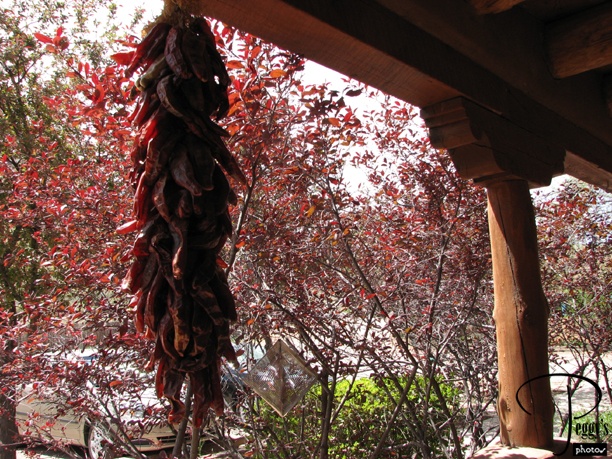
Dried peppers hanging in front of the cafe.

Cafe Abiquiu
Abiquiu
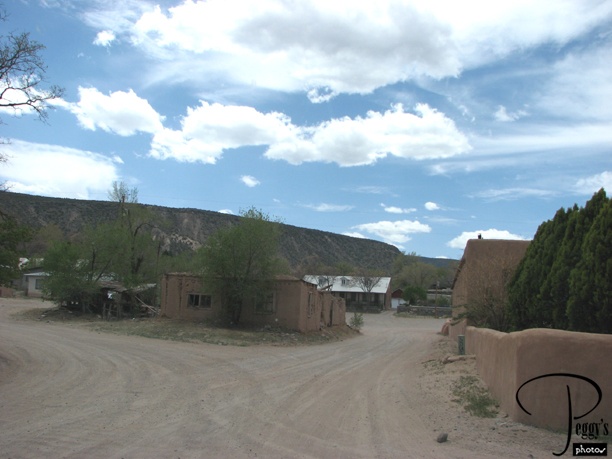
Arriving at “downtown” Abiquiu. Georgia O’Keeffe had one of her two houses here.

Abiquiu
Abiquiu
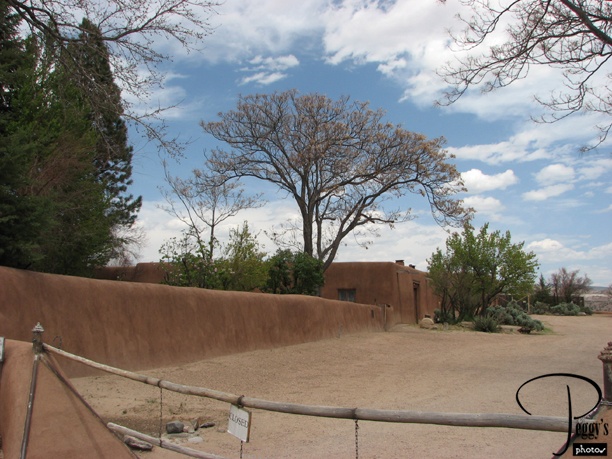
Georgia O’Keefee’s house. We didn’t tour it but you can arrange to have a tour of it.

Abiquiu
Abiquiu
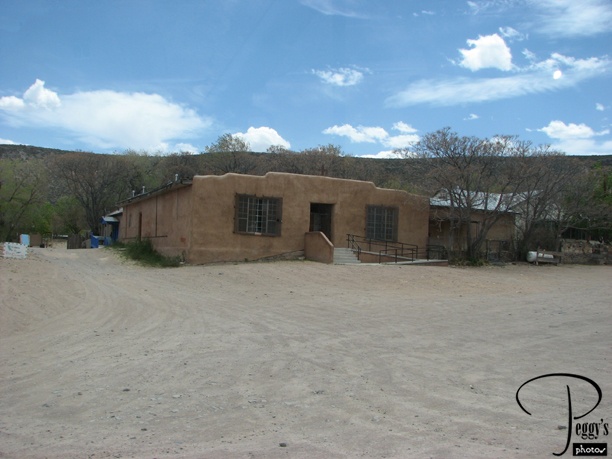
More of Abiquiu.

Abiquiu
Abiquiu
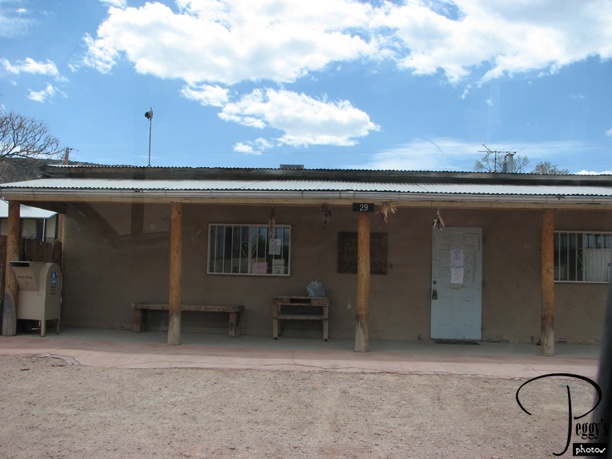
The Abiquiu post office.

Abiquiu
Abiquiu
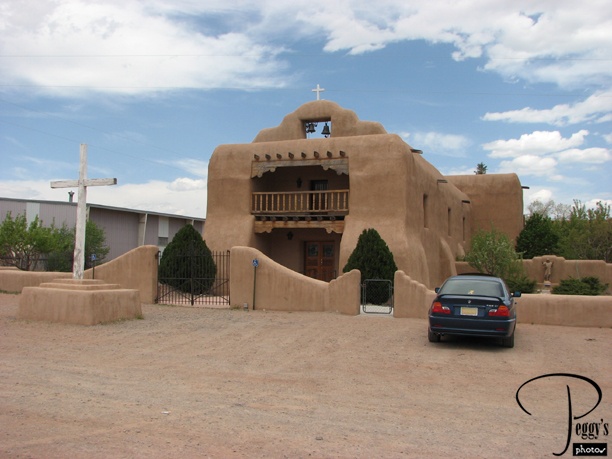
Georgia O’Keefee gave money to have this church built in Abiquiu.

Abiquiu
Abiquiu
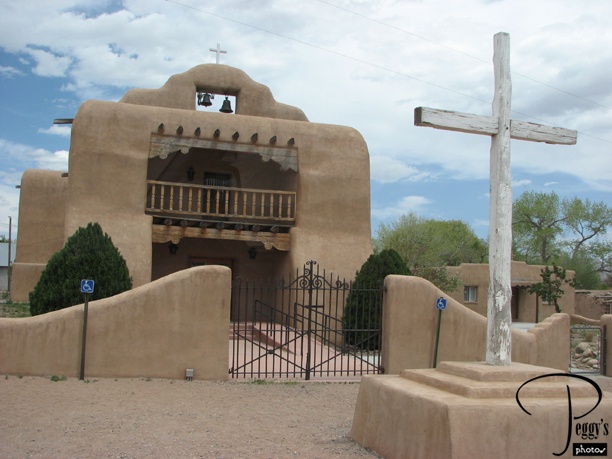
Another view of the church.

Abiquiu
Abiquiu
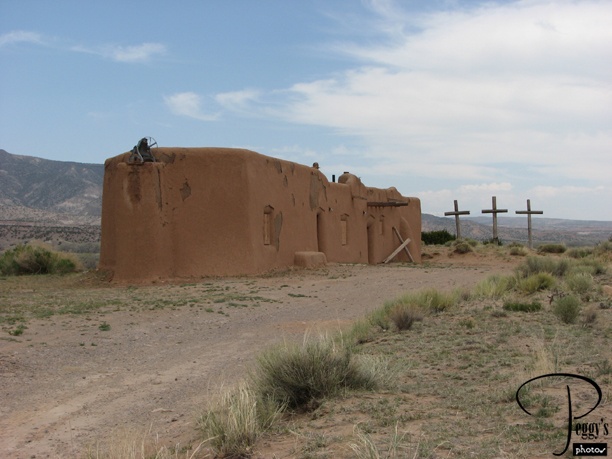
Farther up on the hill from “downtown” Abiquiu is the Penitente Morades Church.

Abiquiu
Abiquiu
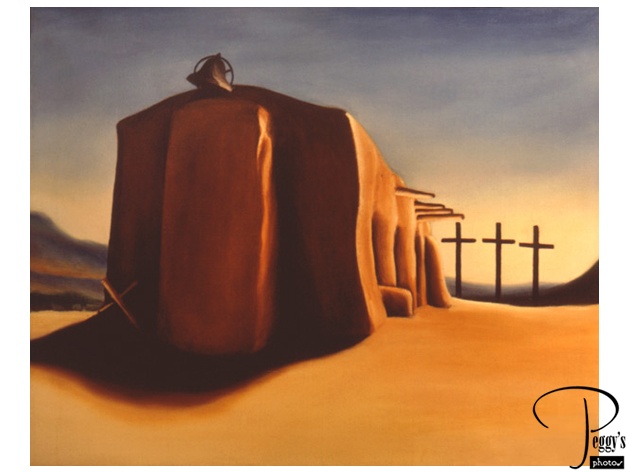
Georgia O’Keefee’s painting of this church.

Abiquiu
Abiquiu
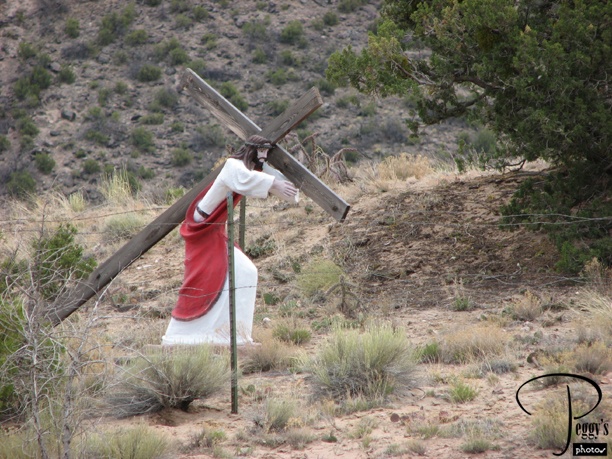
A “maderos,” a cross carried by Penitentes during their processions. The Penitente Brothers (Los Hermanos Penitentes) are a Catholic lay organization active in New Mexico and Southern Colorado since the late 1700s. Flagellation is part of their rituals.

Abiquiu
Abiquiu
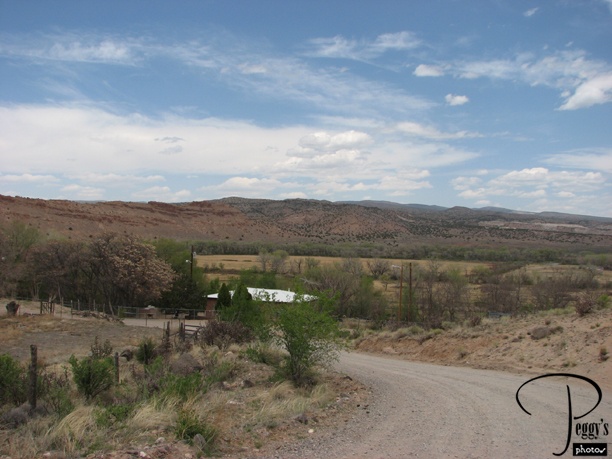
More of Abiquiu.

Abiquiu
Abiquiu
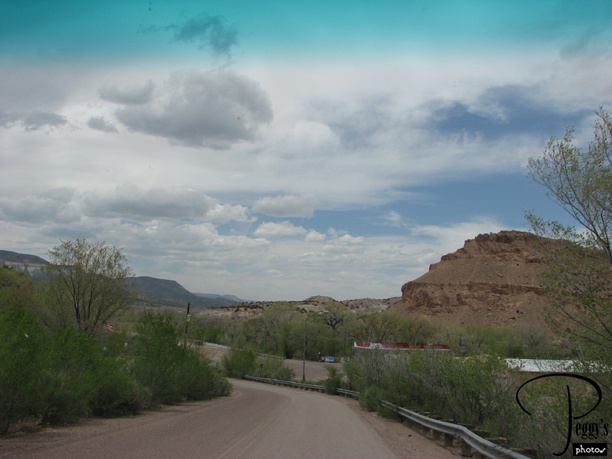
Going down the hill from Abiquiu to the main road.

Abiquiu
Abiquiu
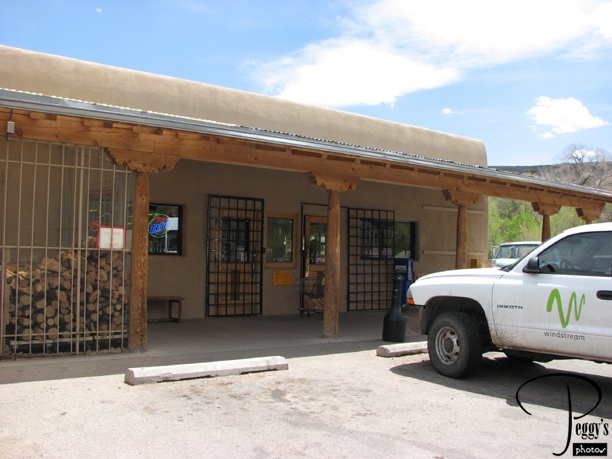
We stopped at this fish tackle/deli store to buy sandwiches for our lunch.

Abiquiu
Abiquiu
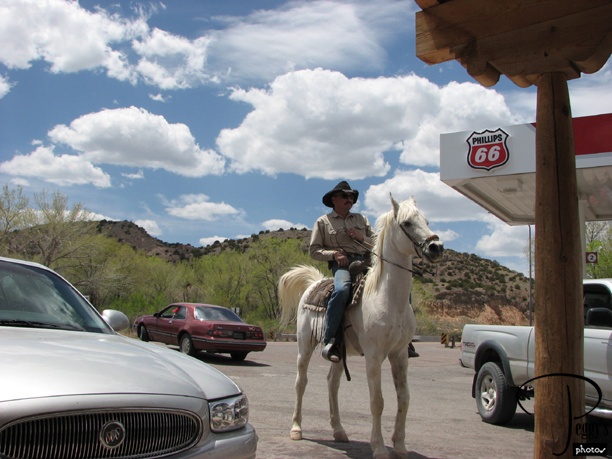
I bought everything I needed for a picnic lunch to eat later at the Ghost Ranch and sat down on a bench outside the deli. This cowboy rode up on this beautiful white horse. He asked his horse if it would stay where it was while he went into the store.

Abiquiu
Abiquiu
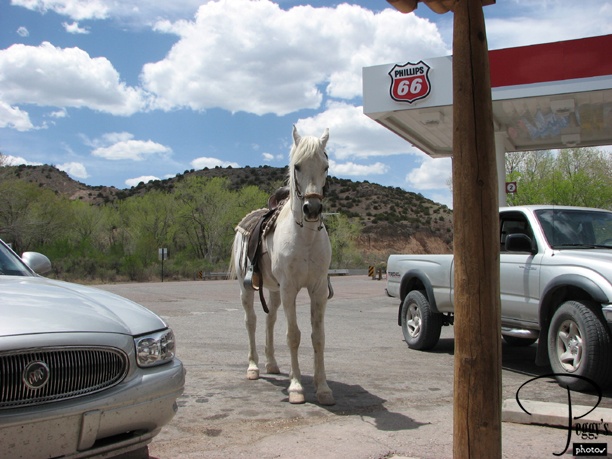
He got off his horse and asked me if I would watch his horse for him while he went into the store. I said I would. You of course notice that this horse has not been tethered. I was afraid to move––If I moved, would the horse run away? Several people came out of the store, amazed at the sight of this beautiful, untethered white horse. I told them its rider asked me to watch it for him and this is what I was doing.

Abiquiu
Abiquiu
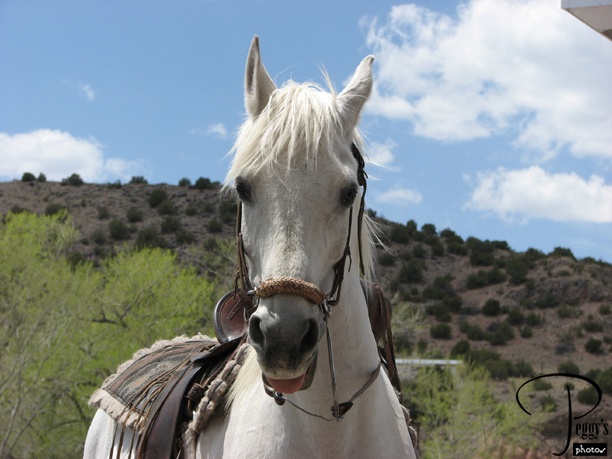
I was waiting for someone to say, “You’re on Candid Camera,” making me look like an idiot watching this horse for the cowboy. But I did take some close–ups of this beautiful horse.

Abiquiu
Abiquiu
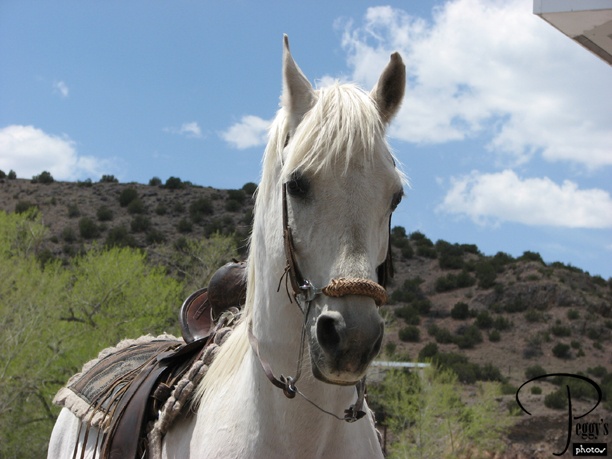
Another one.

Abiquiu
Abiquiu
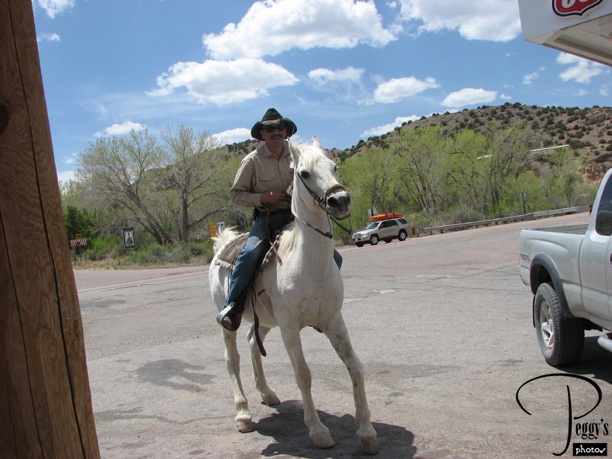
A good 10 minutes later, the cowboy came out of the store. He asked me if I had watched his horse for him––I said yes, and also that it was worth some photos of him on the horse. He agreed.

Abiquiu
Abiquiu
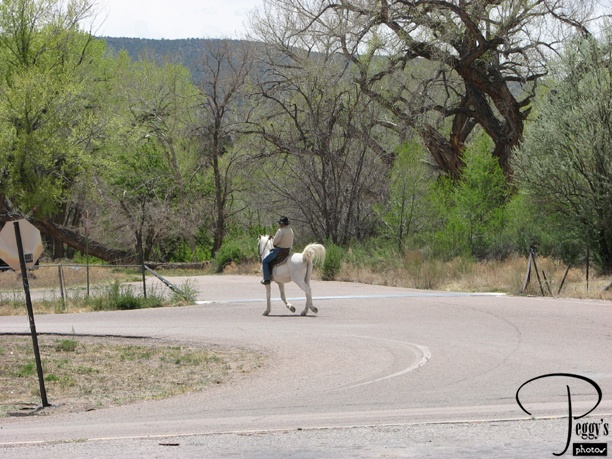
Horse and rider going up to “downtown” Abiquiu.

Abiquiu
On the Road
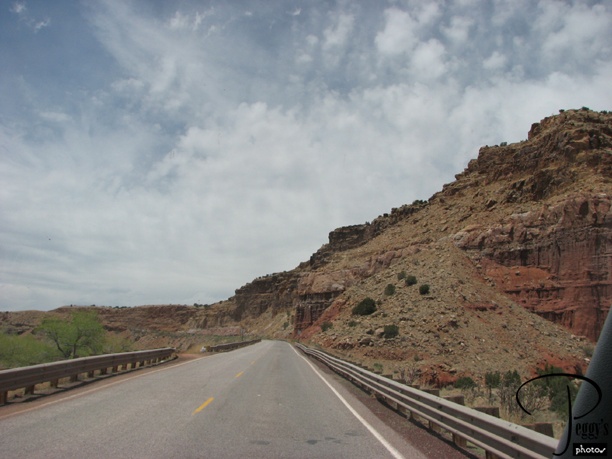
Scenery on the road.

On the Road
Chama River Valley
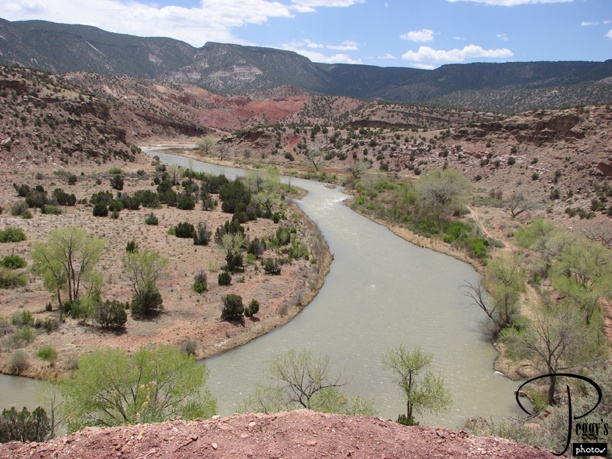
I recognized this scene immediately as one that Georgia O’Keeffe had painted.

Chama River Valley
Chama River Valley
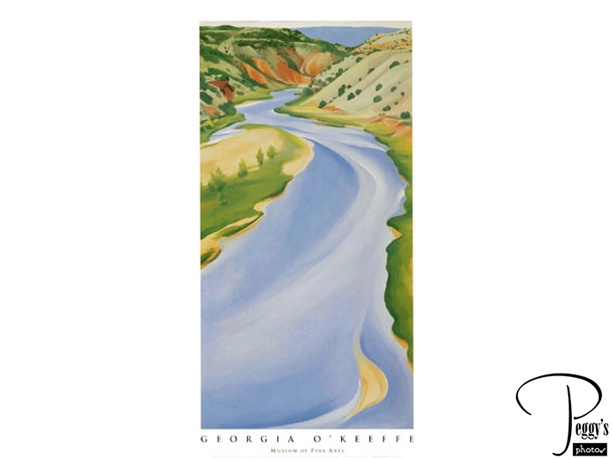
Georgia O’Keeffe’s painting.

Chama River Valley
Chama River Valley
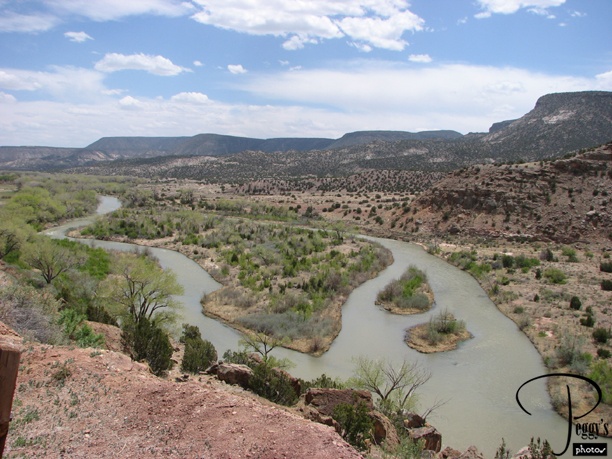
More of the Chama River Valley.

Chama River Valley
Chama River Valley
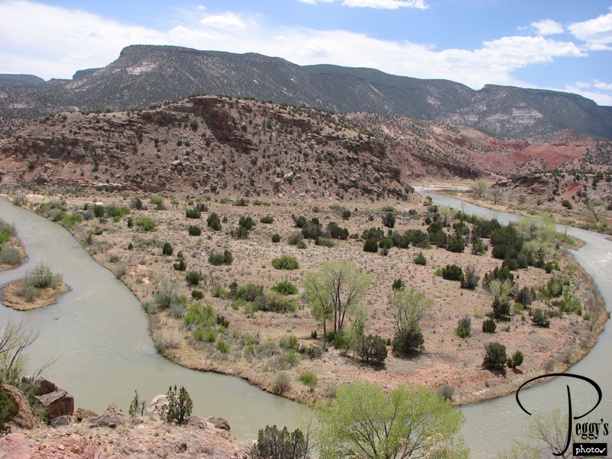
And another one.

Chama River Valley
On the Road
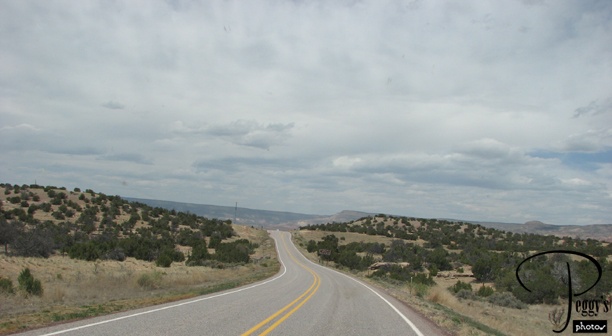
Road scene.

On the Road
On the Road
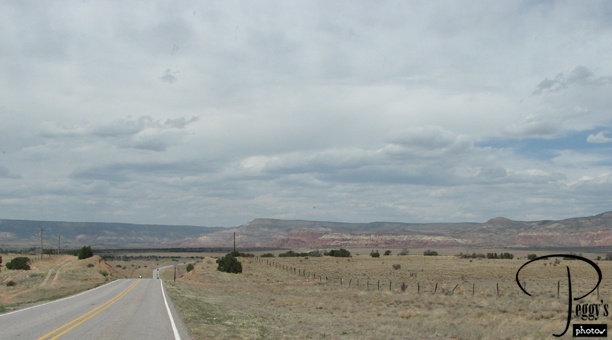
Farther on.

On the Road
On the Road
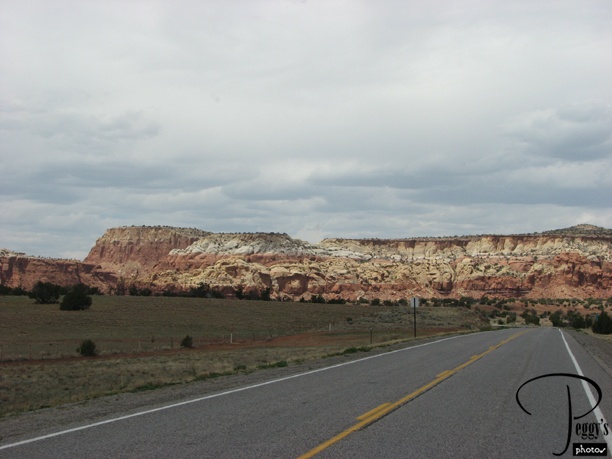
Farther on.

On the Road
On the Road
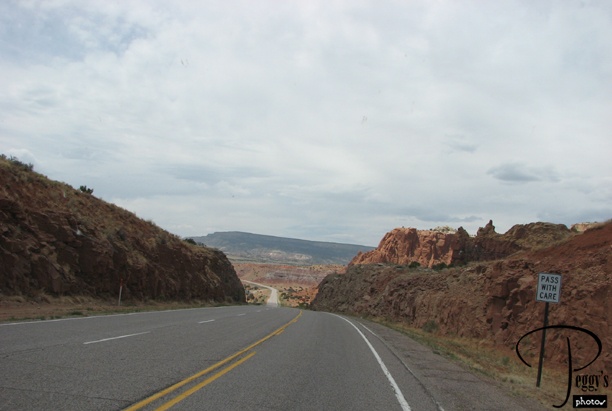
Farther on.

On the Road
On the Road
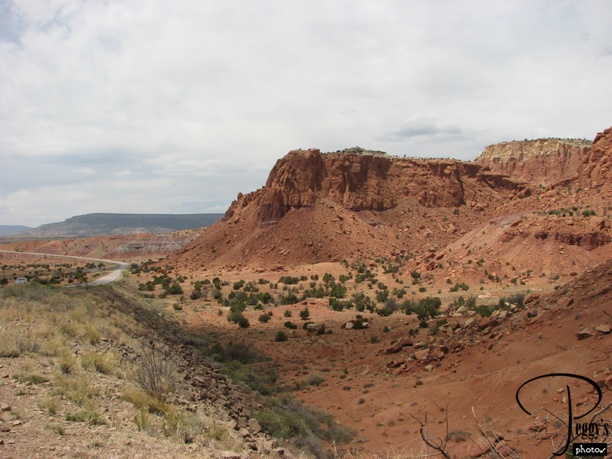
Beautiful sandstone cliffs.

On the Road
On the Road
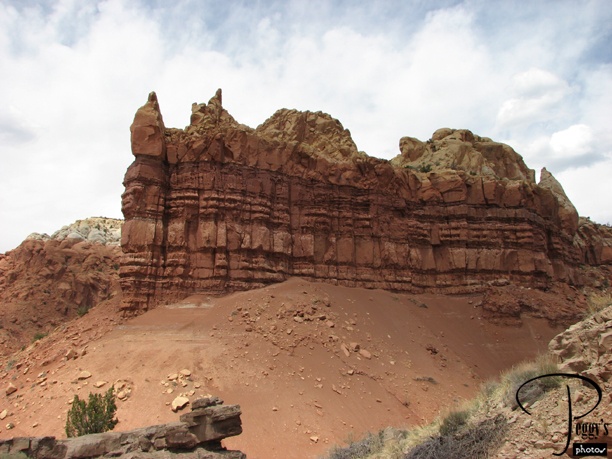
Another cliff.

On the Road
On the Road
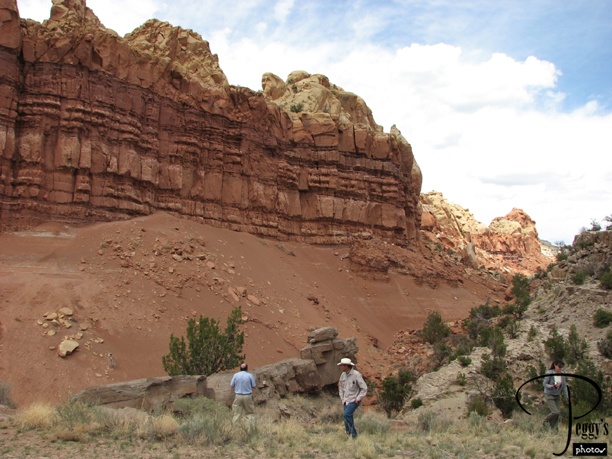
Another view of the cliff. That is Bruce in the middle of the photo and two fellow tour members on either side of him.

On the Road
On the Road
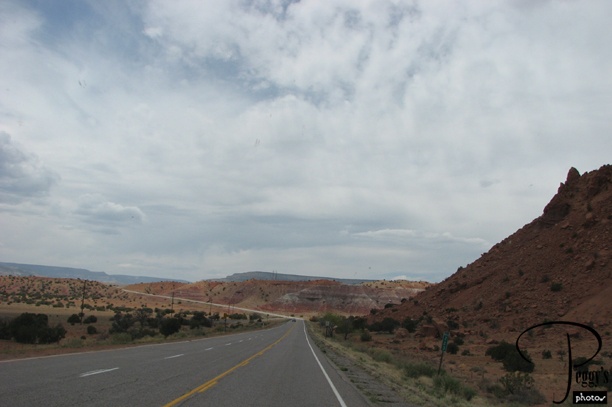
Farther on.

On the Road
On the Road
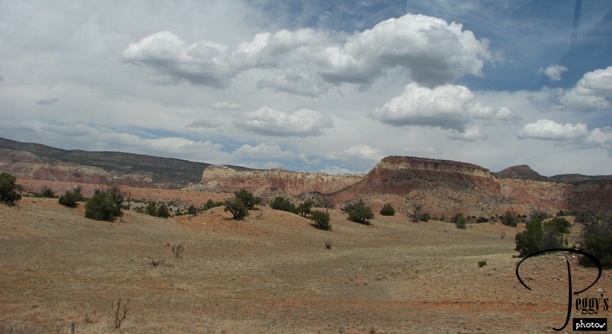
More cliffs.

On the Road
Ghost Ranch
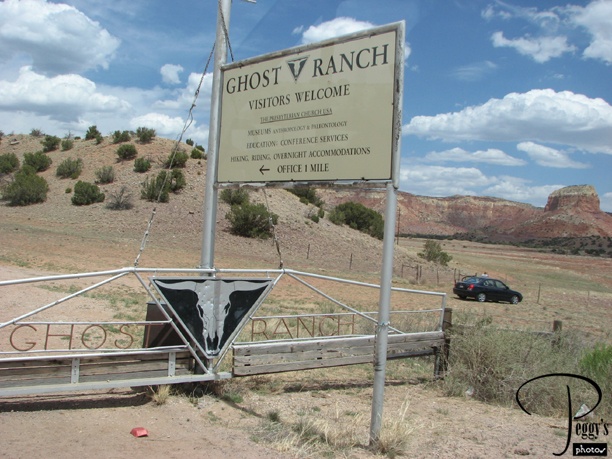
We have arrived at the Ghost Ranch where the second home of Georgia O’Keeffe was located. Today, the Ghost Ranch is a 21,000–acre retreat and educational center administered by the Presbyterian Church. The Ghost Ranch appears in many of her paintings.

Ghost Ranch
Ghost Ranch
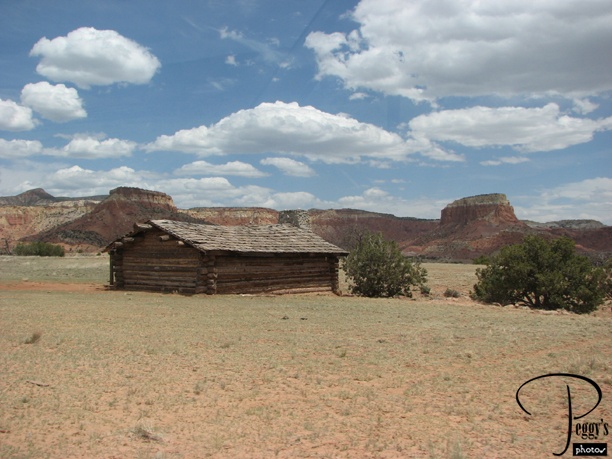
You may recognize this log cabin just pass the front gate––it appeared in the movie “City Slickers.”

Ghost Ranch
Ghost Ranch
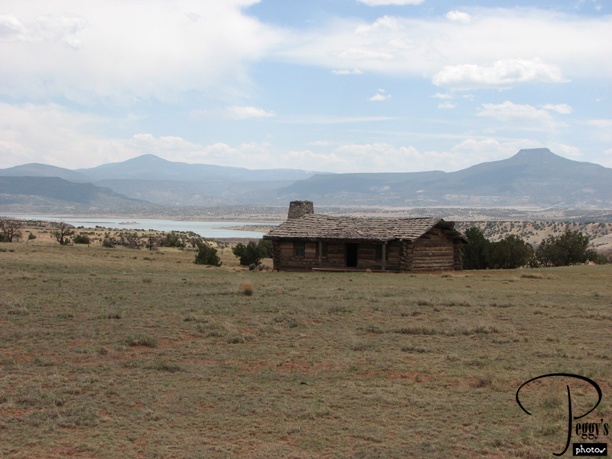
Another view of the “City Slickers” cabin.

Ghost Ranch
Ghost Ranch
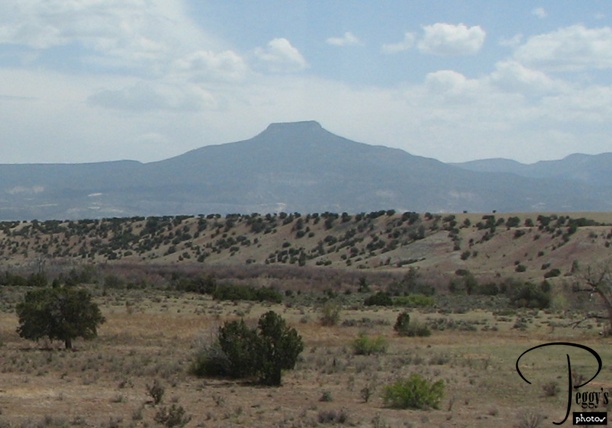
Looking in the same direction as in the last photo is another scene painted by Georgia O’Keeffe.

Ghost Ranch
Ghost Ranch
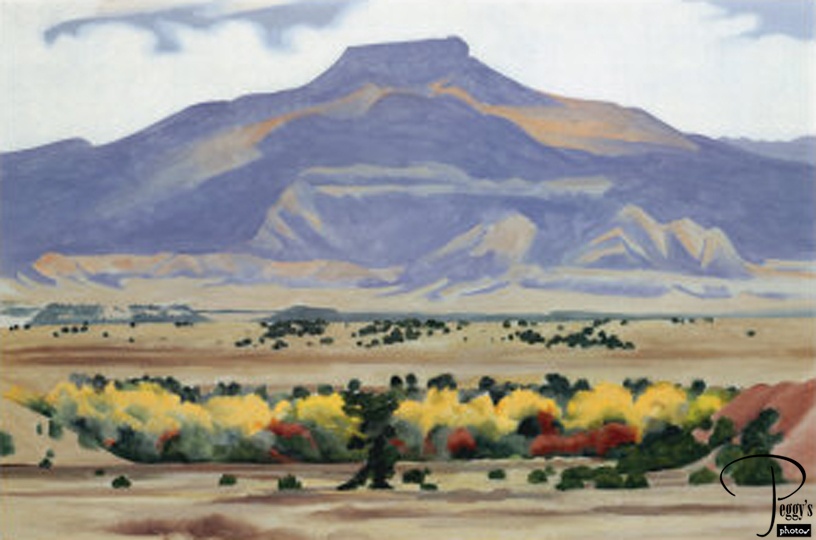
The Georgia O’Keeffe painting of this mountain.

Ghost Ranch
Ghost Ranch
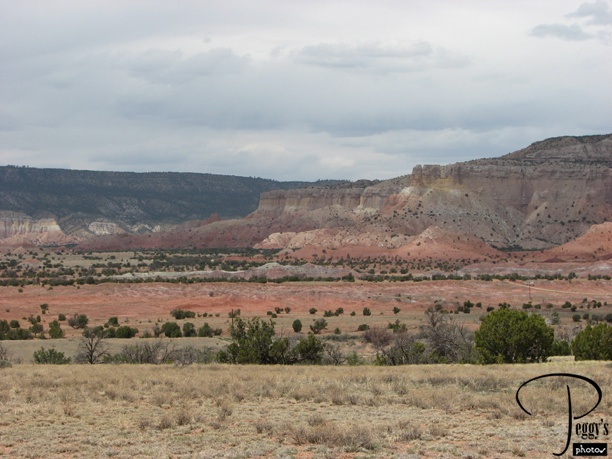
Sandstone cliffs on the Ghost Ranch.

Ghost Ranch
Ghost Ranch
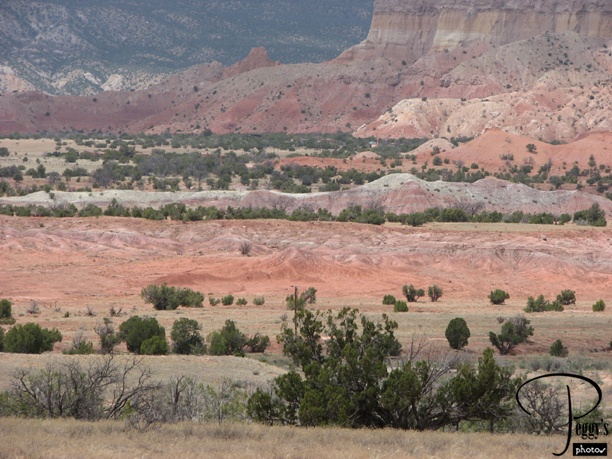
Closer–up view.

Ghost Ranch
Ghost Ranch
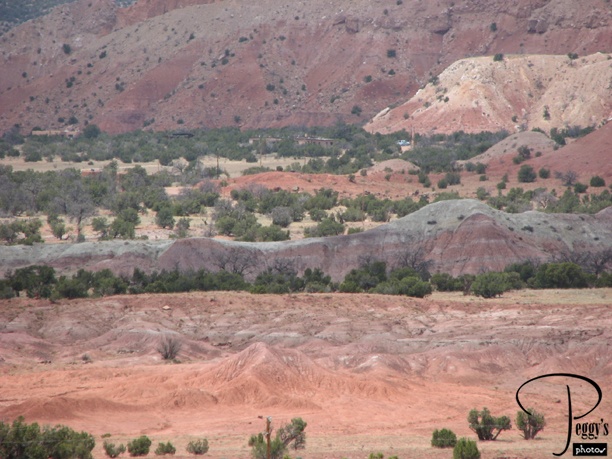
And even closer–up. You can probably make out Georgia O’Keeffe’s house in the photo.

Ghost Ranch
Ghost Ranch
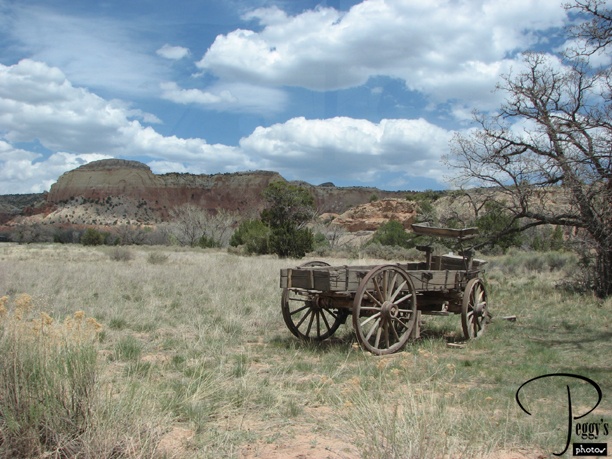
A Ghost Ranch scene.

Ghost Ranch
Ghost Ranch

I think this is called Chimney Rock.

Ghost Ranch
Ghost Ranch
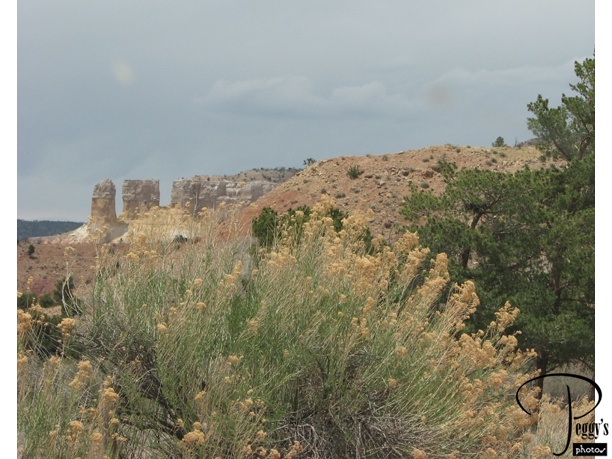
More rocks.

Ghost Ranch
Ghost Ranch
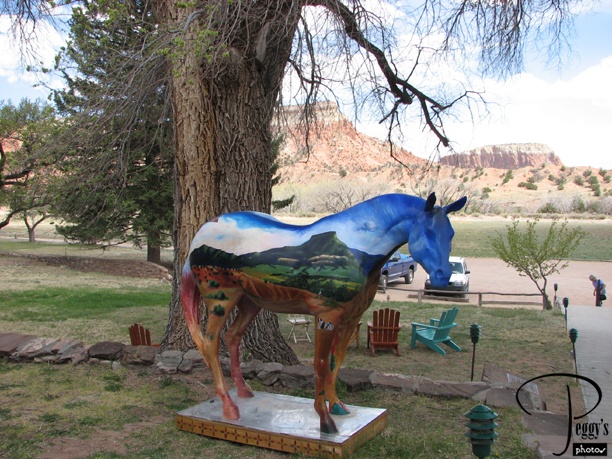
We ate our picnic lunches here. The horse is from Santa Fe’s “Trail of the Painted Ponies” exhibit in 2000. After eating, we drove back to Santa Fe. We didn’t tour the ranch but you can arrange for a tour of it. I was very glad that I wasn’t driving back to Santa Fe myself as we ran into extremely strong winds. My drive back to Albuquerque was windy but not too bad.

Ghost Ranch
Albuquerque Museum Sculpture Garden
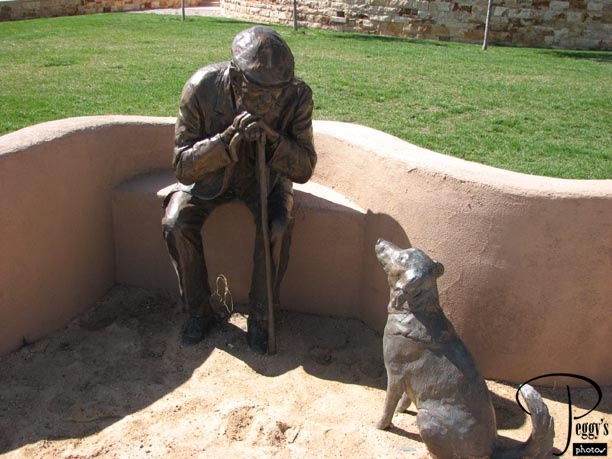
Tuesday, May 6. Linda and I visited the Albuquerque Museum of Art and History and also its Sculpture Garden. No photos were allowed inside the museum––its exhibits were interesting. I have already put photos on this website of the Sculpture Garden––My Albums, page 26, “Day 2 (con’t) New Mexico, Albuquerque.” This photo is one of my favorite sculptures in the garden. I flew home from Albuquerque the following day. I find New Mexico to be very relaxing––all its wide–open spaces, so different from where I live. I’ll be coming back here again.
